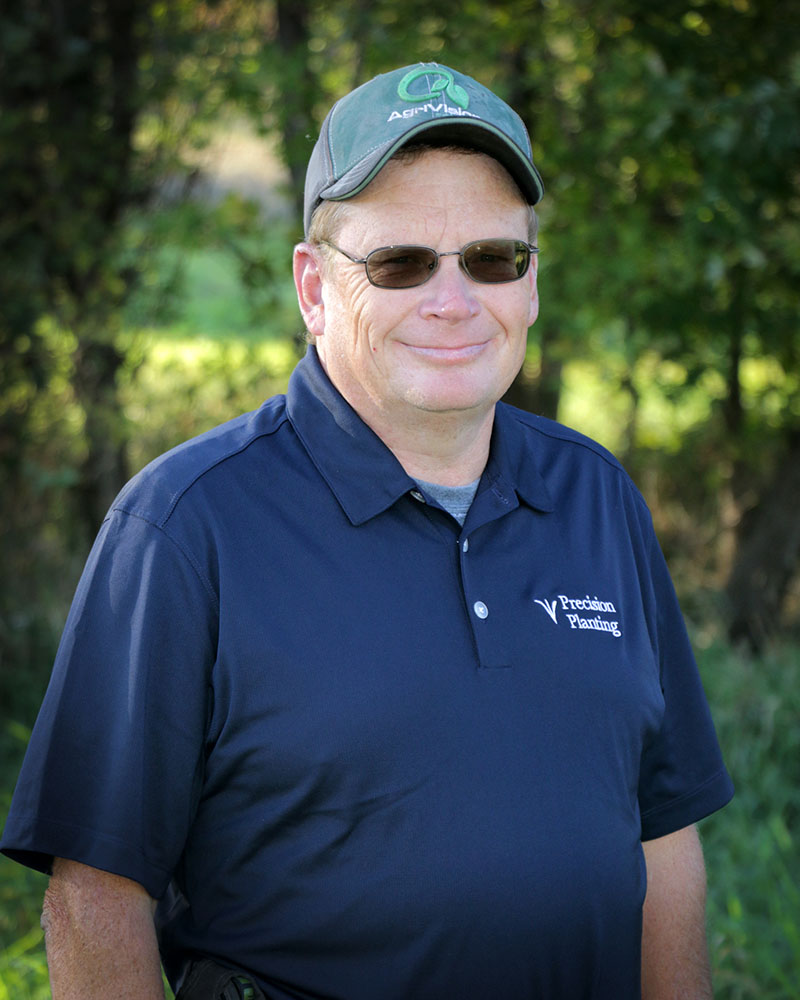Cover Crops
Radishes
Bayou Kale
Turnips
Cereal Rye
Triticale
Austrian Winter Pea
Hairy Vetch
Crimson Clover
Sorghum Sudangrass
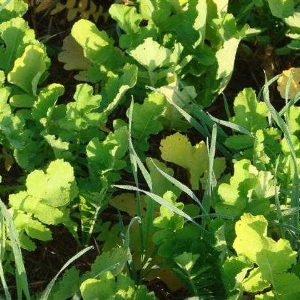


Radishes
Radishes help break up soil compaction with their deep tap root, scavenge leftover nutrients, and helps increase soil organic matter. The optimum time to plant them is late August to middle September. To get the full potential out of the plant they need to have 60 days of good growing weather. It is best to use radishes in a mix due to the fact that they have a tap root and soil erosion can happen easier if no plants with fibrous roots are mixed in.
Planting: Plant 3-10 weeks prior to first killing freeze.
Seeding Depth: 0.25 – 0.5″. Can be planted 1″ in light soils if necessary to reach moisture.
Seeding Rate:
- Drilling: (7.5″ rows):6 lbs/acre
- Broadcast / Aerial:8-10 lbs/acre
- For Forage: Increase drilling rate to 8-10 lbs/acre
Control: Winter kills with two days of 20 degree temperatures. (CAUTION: decaying radishes will have a foul smell when the weather warms up and may not be suitable around populated areas) If planted very early as a cover crop, flowering can develop before they are winter killed. This can be controlled with mowing, grazing or burndown using glyphosate along with 2,4-D equivalent at flowering.



Bayou Kale
Bayou Kale is a cross between Kale and Dwarf Essex Rape. It has the strong taproot of a radish but is more winter hardy. Along with having the taproot to break up soil it also has some fibrous roots to help hold the soil from erosion. It puts on a yellow flower and has a bit of a sweet taste. Works well for rotational grazing for livestock and grows back after grazing well.
Planting: Plant 4-10 weeks prior to first killing freeze.
Seeding Depth: 0.25 – 0.5″
Seeding Rate:
- Drilling: (7.5″ rows):4-6 lbs/acre
- Broadcast / Aerial:6-8 lbs/acre
- For Forage: Drill in at 6-8 lbs/acre
Control: This can be controlled with mowing, intense grazing or burndown using glyphosate along with 2,4-D equivalent at flowering.



Turnips
Turnips are a winter hardy plant and will usually survive a normal winter. Good soil penetration by the taproot which will add more organic matter after decomposition and along with nutrient holding capacity makes this an ideal over winter cover crop. Since turnips are more winter hardy you will have a release of nutrients later than if you were to plant just radishes.
Planting: Plant 3-10 weeks prior to first freeze.
Seeding Depth: 0.25 – 0.5″ Can be planted 1″ in light soils if necessary to reach moisture.
Seeding Rate:
- Drilling: (7.5″ rows):6 lbs/acre
- Broadcast / Aerial:6-7 lbs/acre
- For Forage: Drill in at 6 lbs/acre
Control: This can be controlled with mowing, grazing or burndown using glyphosate along with 2,4-D equivalent at flowering.
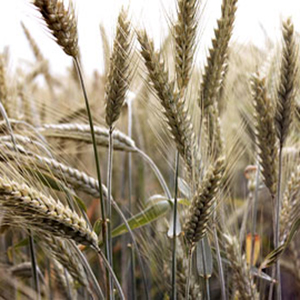


Cereal Rye
Cereal Rye is an all-around ideal cover crop (as long as you have the correct variety). Do not get confused with annual rye. Great root penetration into clay soils, weed suppression, good nutrient holding capacity, helps against soil erosion, and easily killed in the spring either before or after planting. AgriVision Solutions considers cereal rye to be the back bone of most cover crop mixes. The Ryman variety of cereal rye is the easiest to manage because it will not get over 4 to 5 feet tall in most conditions. We suggest to kill it at a 2 to 3 foot in height to prevent too much water holding capacity in the soil and it not being able to dry out.
Planting: Plant 3-10 weeks prior to first freeze.
Seeding Depth: 3/8 – 0.5″ Comparable seed on drill chart is Wheat.
Seeding Rate:
- Drilling (7.5″ rows): 30-40 lbs/acre
- Broadcast / Aerial: 35-45 lbs/acre
- For Forage: Increase drilling rate to 60-70 lbs/acre
- Seed Production: Increase drilling rate to 120 lbs/acre (Do not over fertilize with nitrogen if harvesting for seed. The plants will grow too tall and not have much of a head)
Control: A roller-crimpers can be used for cereal rye termination after the boot stage. Also using glyphosate, glyphosate + 2,4-D, glyphosate + Clarity, glyphosate + Sharpen (Liberty does not give adequate control).


Triticale
Triticale is a cross between wheat and cereal rye. In most cases triticale is used for cattle grazing or haylage. It is ideal for seeding it in the fall, letting the livestock graze it in the winter, then letting it grow in the spring to be a cover crop. Good forage quality with some weed suppression along with holding the soil together to minimize erosion.
Planting: Plant 4-8 weeks prior to first freeze, and as late as 6 weeks after the freeze. Planting is similar to Cereal Rye.
Seeding Depth: 1 – 1.5″ as required for good seed-to-soil contact. Comparable seed on drill chart is Wheat.
Seeding Rate as Cover Crop:
- Drilling: 30-40 lbs/acre
- Broadcast / Aerial:35-45 lbs/acre
- For Forage: Increase drilling rate to 60-70 lbs/acre
Control: Requires a burndown of glyphosate herbicide prior to boot stage. Can also be mechanically controlled by mowing or flattening with a roller-crimper in the milk or dough stage.
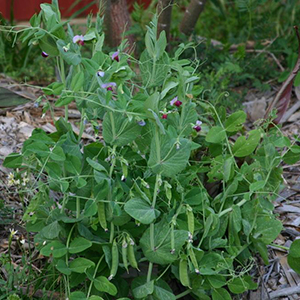


Austrian Winter Pea
This is a winter hardy pea that is great for holding nitrogen and preventing soil erosion. If planted with a grass such as oats, triticale, or barley the combination makes for excellent grazing for livestock. Austrian winter peas grow pretty fast in the middle of fall with adequate moisture. It will stay alive with good nitrogen holding nodules until the temperatures stay in the teens or lower for a lengthy period of time.
Planting: Plant in fall 3-6 weeks prior to first freeze. Can also be planted in early spring.
Seeding Depth: 1 – 1.5″ Comparable seed on drill chart is Soybean.
Seeding Rate:
- Drilling:50 lbs/acre
- Broadcast / Aerial:60-70 lbs/acre
- For Forage: Increase drilling rate to 90 lbs/acre
Control: At any stage can be terminated using glyphosate herbicide or 2,4-D. It can also be mechanically controlled by disking lightly or mowing after full bloom. It is likely to winterkill when sustained temperatures are below 18 degrees with no snow cover.
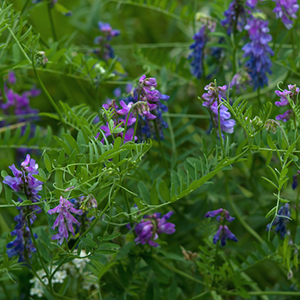


Hairy Vetch
Hairy Vetch is a winter annual legume. A very good legume to have in a mix ahead of corn. It needs to be planted early in the fall. Not much nitrogen will be fixed in the fall due to the nodules taking a while to develop. Most of its nitrogen fixing happens in the late winter to early spring.
Planting: Plant 4 weeks prior to first freeze. Requires specific inoculant for maximum N production. Slow to establish in the fall but does well with a nurse crop such as oats or triticale.
Seeding Depth: 0.5 – 1.5″ Comparable seed on drill chart is Vetch or Sorghum.
Seeding Rate:
- Drilling:15 lbs/acre
- Broadcast / Aerial:20 lbs/acre
Control: Requires a burndown of glyphosate with 2,4-D or glyphosate with sharpen. Can also be mechanically controlled by rotary mowing, flailing or flattening with a roller or crimper if in 50% bloom. Optimal nitrogen production is up to first flower. Can be planted into green.
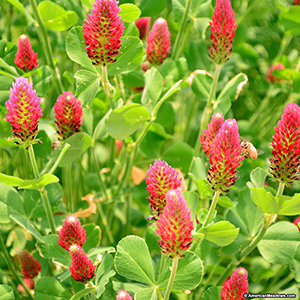


Crimson Clover
Crimson Clover is used primarily for soil erosion control and nitrogen fixation. It is a great addition to a mix to hold nutrients for the coming corn crop. This clover is a little more winter hardy than most other clovers. More than likely it will not over winter in our climate but if it does it is easily controlled.
Planting: Plant 6-9 weeks prior to first freeze.
Seeding Depth: 0.25 – 0.5″ as required for good seed-to-soil contact. Comparable seed on drill chart is Crimson Clover.
Seeding Rate:
- Drilling (7.5″ rows): 12 lbs/acre
- Broadcast / Aerial:15 lbs/acre
- For Forage: Add to grazing mix at no more than 5 lbs/acre
Control: Requires a burndown of 2,4-D with glyphosate or sharpen with glyphosate.



Sorghum Sudangrass
Sorghum Sudangrass is good for weed suppression, soil erosion management, and building organic matter. By planting a thick crop of this you will have such a thick stand that no late weeds will be coming up in the fall. It needs to be mowed off at about 20- 30 inches tall to be managed properly before winter kill. If it is not mowed it can be difficult to manage in the spring.
Planting: For most benefit, plant a minimum of 6 weeks prior to first freeze.
Seeding Depth: 0.75 – 1″ as required for good seed-to-soil contact. Comparable seed on drill chart is Sudangrass.
Seeding Rate:
- Drilling (7.5″ rows):25 lbs/acre
- Broadcast / Aerial:30 lbs/acre
- For Forage: Increase drilling rate to 50 lbs/acre
Control: Terminate when seed heads begin to appear unless a freeze is in sight. It will winter kill in our climate. Mow then till if sudangrass is tall.











